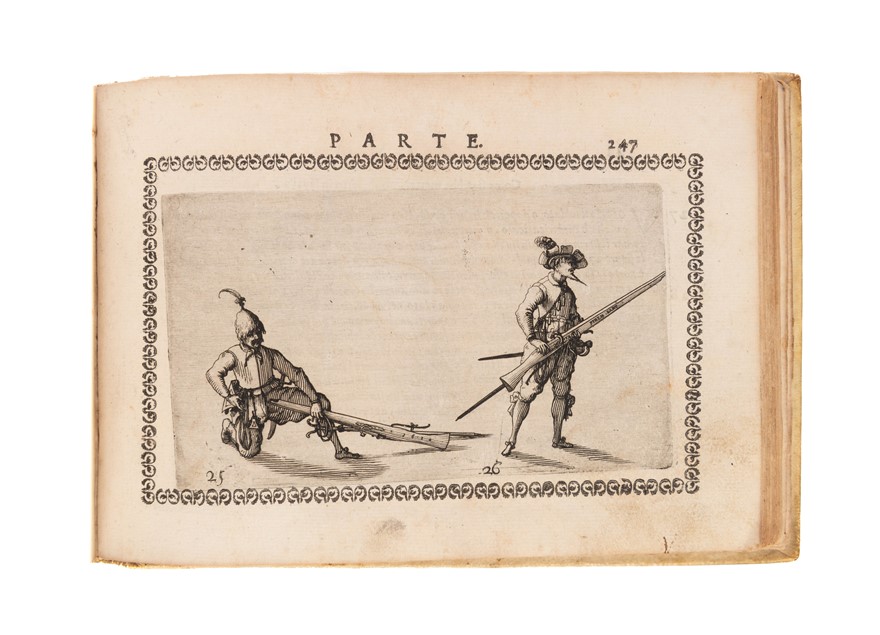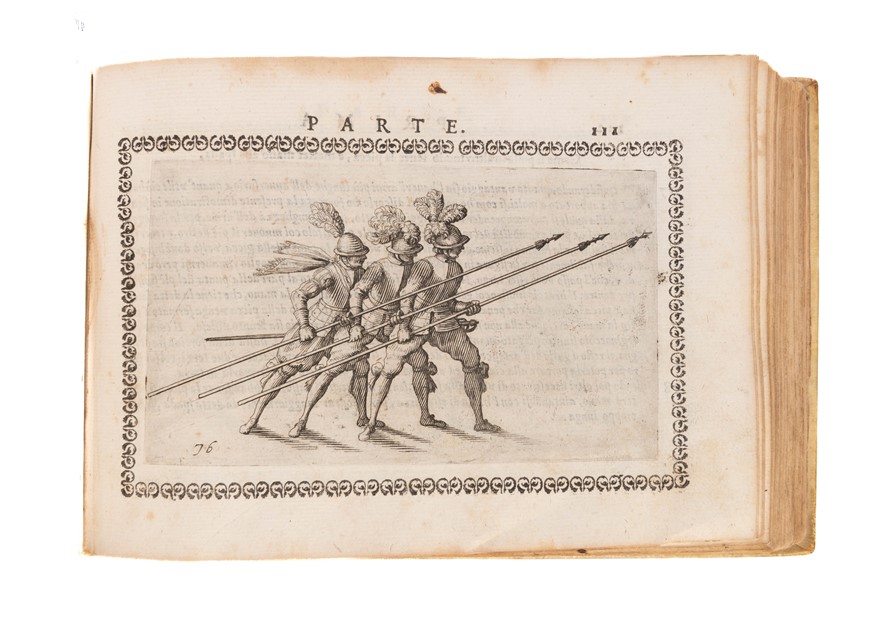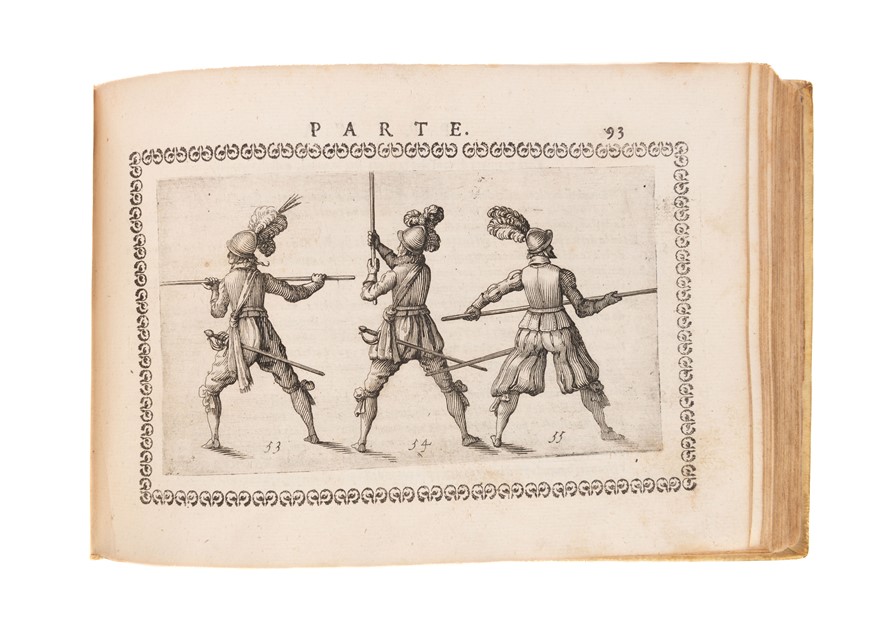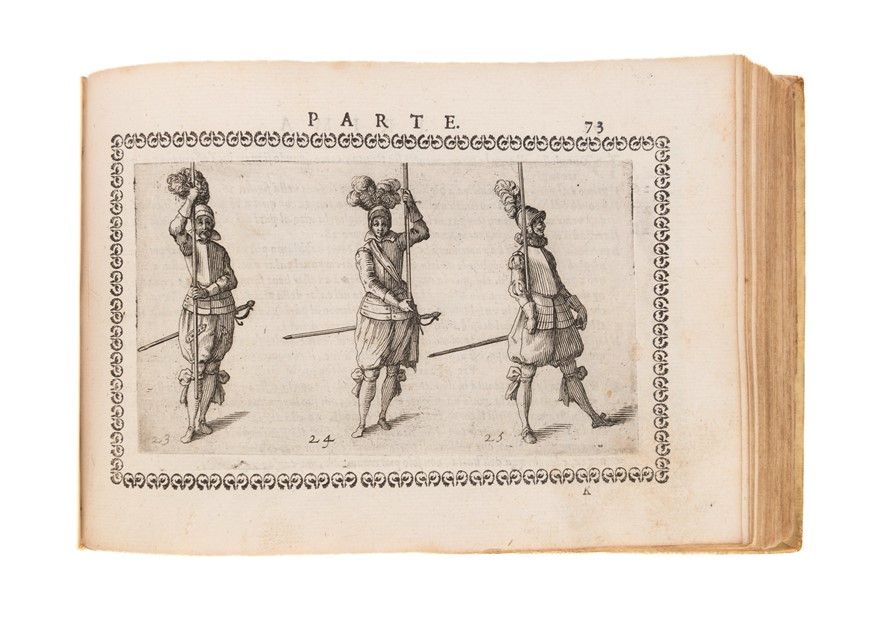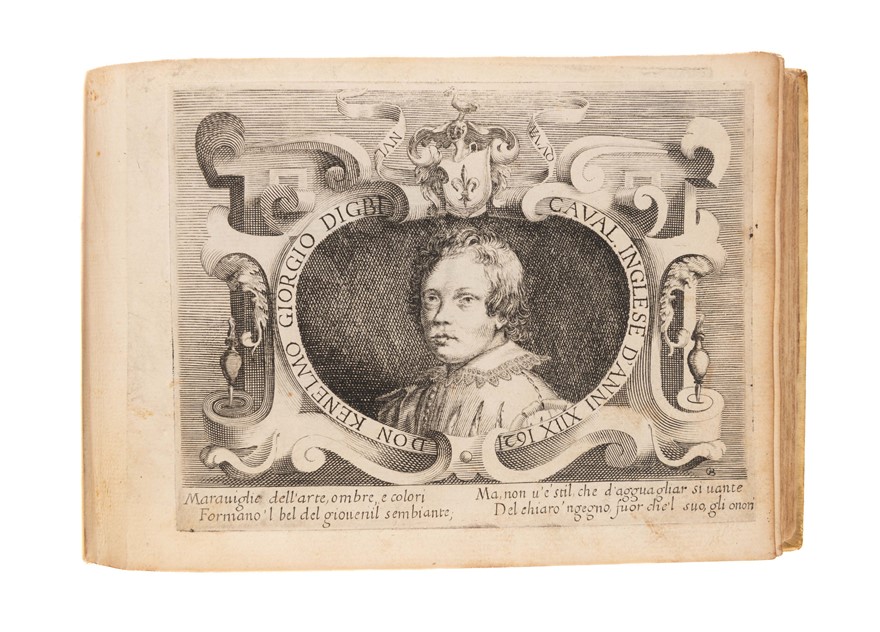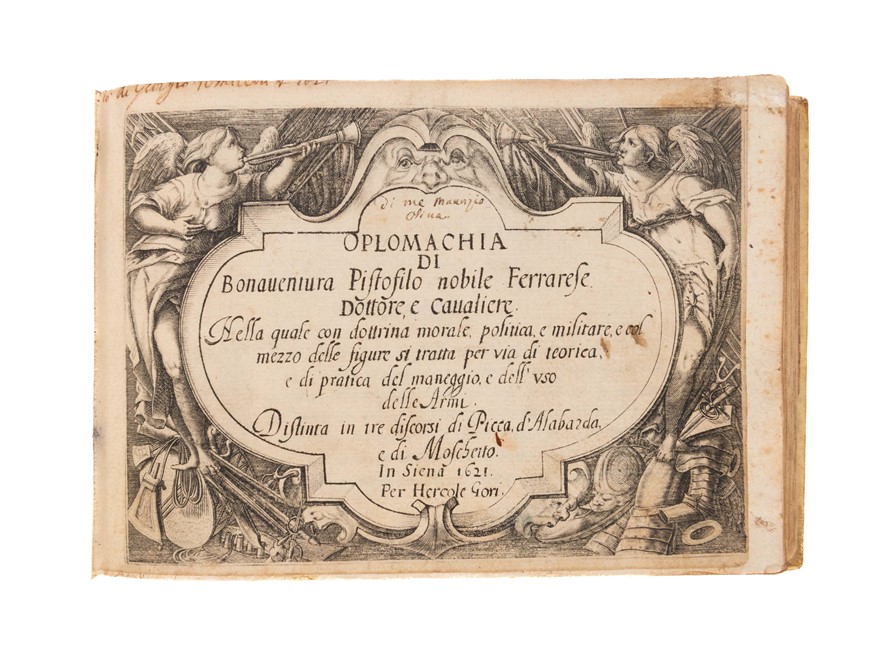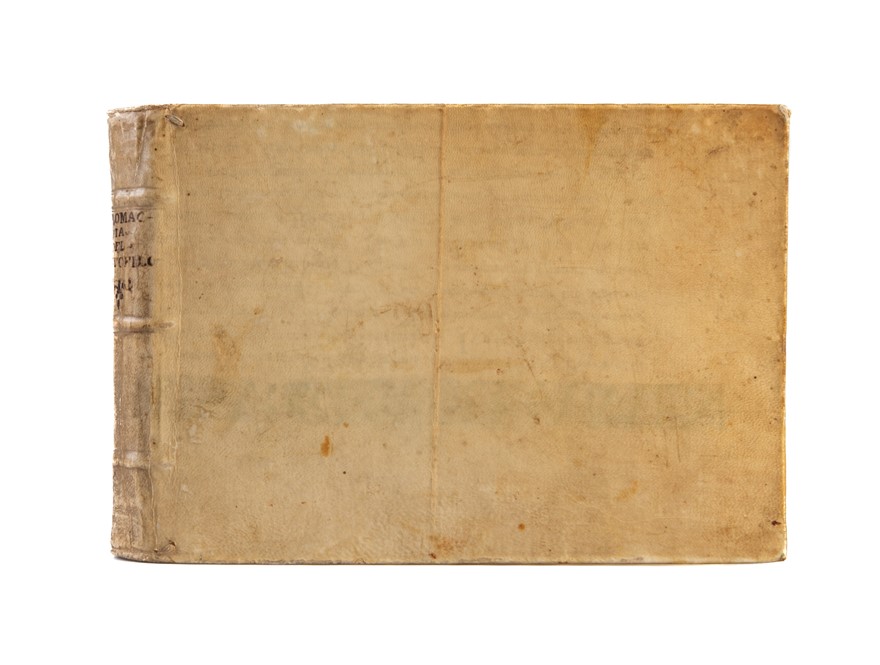Oplomachia di Bonaventura Pistofilo.Siena: Hercole Gori, 1621
PISTOFILO Bonaventura (1621)
£4500.00
Available to view at our Curzon Street shop.
DEDICATED TO KENELM DIGBY, WITH HIS PORTRAIT
Engraved title page, full-page engraved portraits of Kenelm Digby (monogrammed 'CB') and Bonaventura Pistofilo, and 54 full-page engravings, woodcut initials throughout.
Oblong 4to (192 x 135mm). [8], 315 (i.e. 321), [1]pp (with additional leaf in quire Q called for). Eighteenth-century vellum over pasteboard, spine with three raised bands, title in manuscript in second compartment (minor stains to vellum).
Siena: Hercole Gori, 1621
The first edition of Bonaventura Pistofilo's extensively illustrated manual on the history and handling of pikes, halberds and muskets, dedicated to English courtier, diplomat, natural philosopher and polymath Sir Kenelm Digby (1603-1665), with his portrait (attributed to Francesco Bertelli by Brunet).
Divided into three parts, the first deals with the origins, history and usage of the pike; the second, shortest section, with the history, etymology and usage of the halberd; and the third, the background and use of the musket and arquebus (including a short history of gunpowder) and a final section on military dress and colours, and flags. In the 'use' section of each part, full-page engraved plates with numbered figures illustrate corresponding passages of text - how to carry a pike and prop it against a wall, for example, how to carry a halberd, and so on.
The present work is dedicated to Sir Kenelm Digby, described fondly with 'paternal affection' by Pistofilo here in his dedicatory address as 'joining splendour in arms with worth in letters' - high praise considering that this work was published when Digby was only eighteen years old, in 1621, as the inscription around his portrait explains. Pistofilo, a Ferrarese living in Siena, and the young Digby very likely crossed paths while the latter was in Siena as part of his Grand Tour, begun in 1620. 'In Siena he was made a member of a learned society, the Accademia dei Filomati, before which he delivered two very ornate, very learned, very obscure orations on secret modes of writing among the ancients' (Rhodes, 61). Pistofilo gives no indication of the source of his knowledge about Digby's ability with a sword, though there are several accounts of duels and skirmishes in which he was involved as a young man in Spain, later in France and, indeed, in Siena, apparently in the same year as, but prior to when the present volume was published, in which a Captain struck Digby on the head with his sword after a harsh exchange of words (Moshenska, 78).
By the publication of the present volume, the young Kenelm Digby's Grand Tour had already proved eventful - from narrowly escaping plague in Paris, to staving off the amorous advances of the French queen mother, Marie de Medici during his stay in Angers. After Siena, Digby went on to Spain to assist in the marriage negotiations of the Prince of Wales, before returning to London and being knighted in 1623. His subsequent escapades would not be out of place in a work of fiction; a secret marriage to his childhood sweetheart, privateering in the Mediterranean, tragic early widowhood, pursuits in science and natural philosophy, fundraising for Charles I and the Royalist cause on the Continent, exile and subsequent return to England (with a stint as Cromwell's intermediary in France), pursuits in alchemy and the innovation of his 'sympathetic powder' (a 'weapon salve', said essentially to cure wounds from a distance), and election to the Royal Society as one of its earliest members, in 1660 (ODNB).
Provenance: 1. Inscription on front endpaper 'Questo libro è comprato da me Filippo Taccoli Masini per[?] 4 l'anno 1726.' 2. Inscription in (slightly later?) hand on endpaper and title page of Maurizio Oliva. 3. Partially trimmed inscription at head of title page, 'Giorgio ?Torricelli', date illegible. Numbers and arithmetic jotted on verso of final leaf.
Title leaf trimmed, with pasted extension strips at lower edge and fore-edge (not modern, likely eighteenth-nineteenth century), closed tear to p. 98, neatly repaired, barely touching plate. Leaves thumbed throughout, dusty, some staining and ink stains. Corrected title on p.106, pasted over original, likely just after printing.
Thimm, Fencing & Duelling, p.226. Graesse V p.305. Cockle, 742. Brunet, Suppl. II, 244.
Dennis E. Rhodes, 'Sir Kenelm Digby and Siena', The British Museum Quarterly, 21.3 (1958), pp.61-3. J. Moshenska, A Stain in the Blood: The Remarkable Voyage of Sir Kenelm Digby (London, 2016).
Stock Code: 246064
